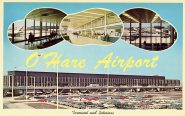
Chicago O’Hare International Airport (ORD) in Postcards
By Marvin G. Goldman
By the end of World War II in 1945, Chicago’s main airport, Midway, was barely coping with accelerating passenger numbers and no significant room for facility expansion. The City had no alternative but to select an entirely new location to meet future needs for additional capacity. In 1945 it selected Orchard Field, northwest of downtown Chicago. The site had been home to a Douglas Aircraft C-54 assembly plant during the war and had four intersecting runways.
In 1949 the Chicago City Council renamed Orchard Field as “Chicago-O’Hare Field,” in honor of naval aviator Lt. Cmdr. Edward H. “Butch” O’Hare, a Chicago native and Medal of Honor recipient. The original airport code “ORD,” taken from the Orchard Field name, was retained.
O’Hare became the first major airport in the U.S. to be planned and constructed after World War II. Development took several years, and it was only in 1955 that O’Hare officially opened to scheduled commercial airline service. Growth was slow at first, as Midway Airport, being close to downtown Chicago, was much more popular at that time. However, with the arrival of the “jet age” in 1958-1959, and the resultant need for longer runways that Midway Airport didn’t have and lacked room to build, O’Hare took off on its path to becoming America’s busiest airport.
I am aware of only two postcards of O’Hare issued prior to 1959:
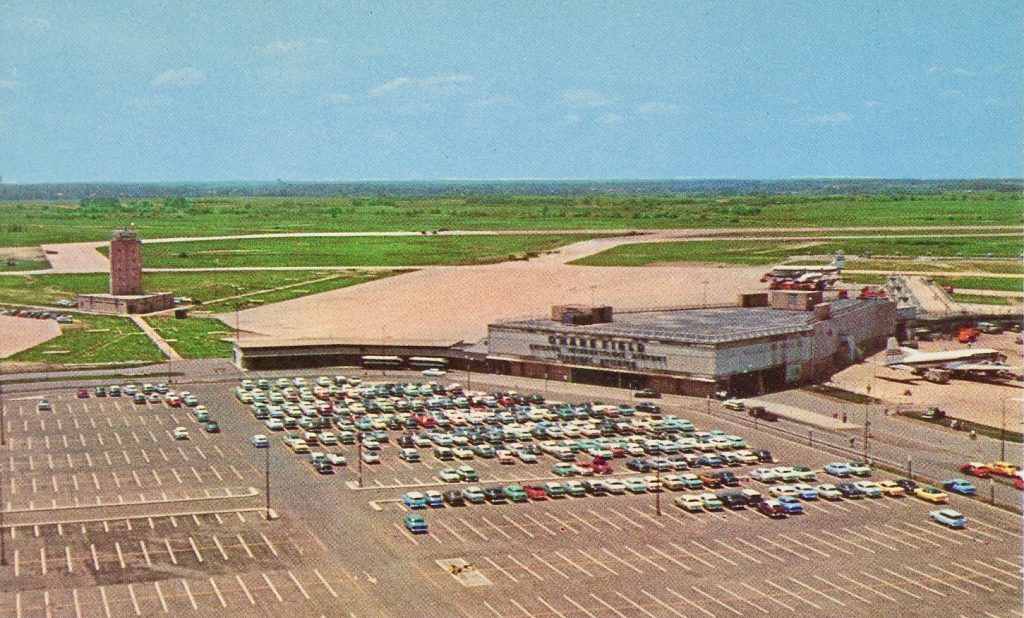
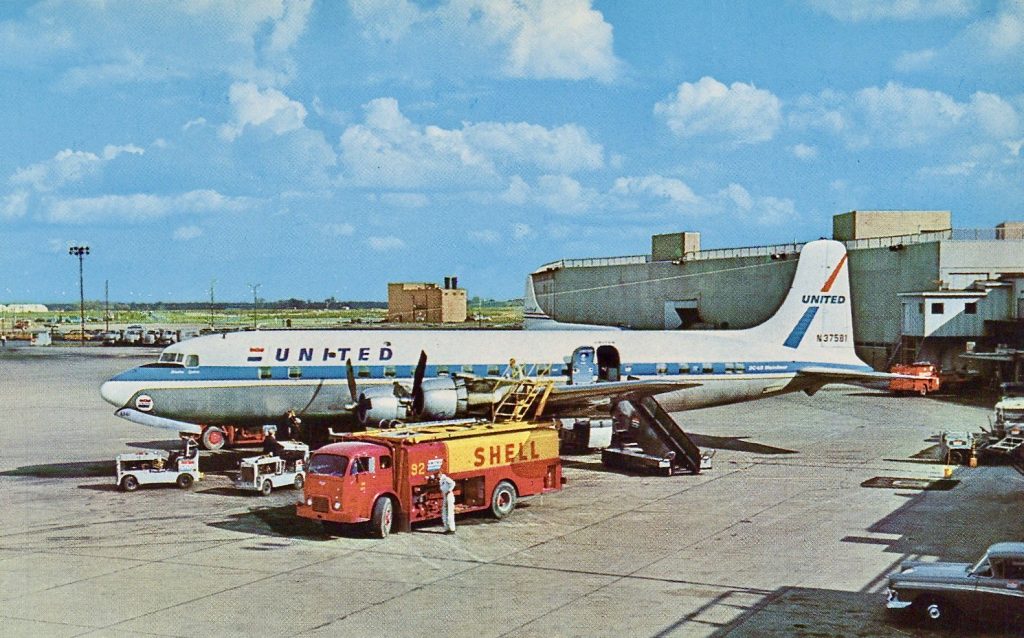
In 1959 pure jets started flying into O’Hare. The early model pure jets, Boeing 707s and Douglas DC-8s, could not fly into Midway Airport because of Midway’s shorter runways. My own first flight, on 17 December 1959, was aboard a new Continental Airlines 707 which flew from Los Angeles to Chicago O’Hare with a stop in Denver.
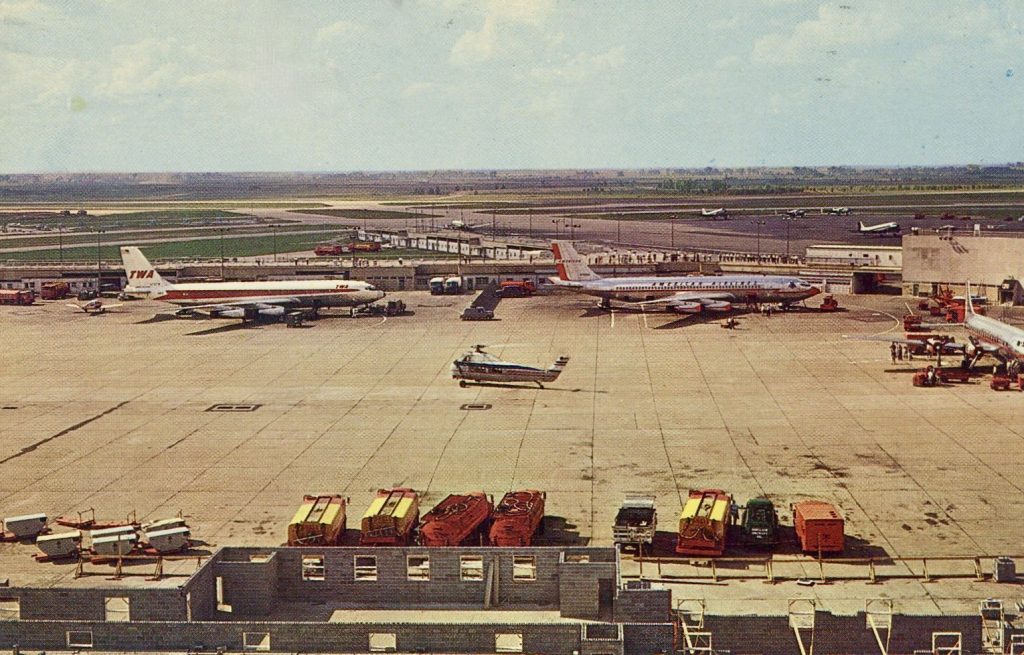
Most postcards of O’Hare were issued during the 1960s, the early jet-age years. By July 1962 all scheduled operations at Midway airport were transferred to O’Hare. In that year O’Hare served 10 million passengers and claimed to be the “World’s Busiest Airport.” By 1965 that number doubled to 20 million, and by 1968 it rose to 30 million. Here is a selection of postcards from that decade:
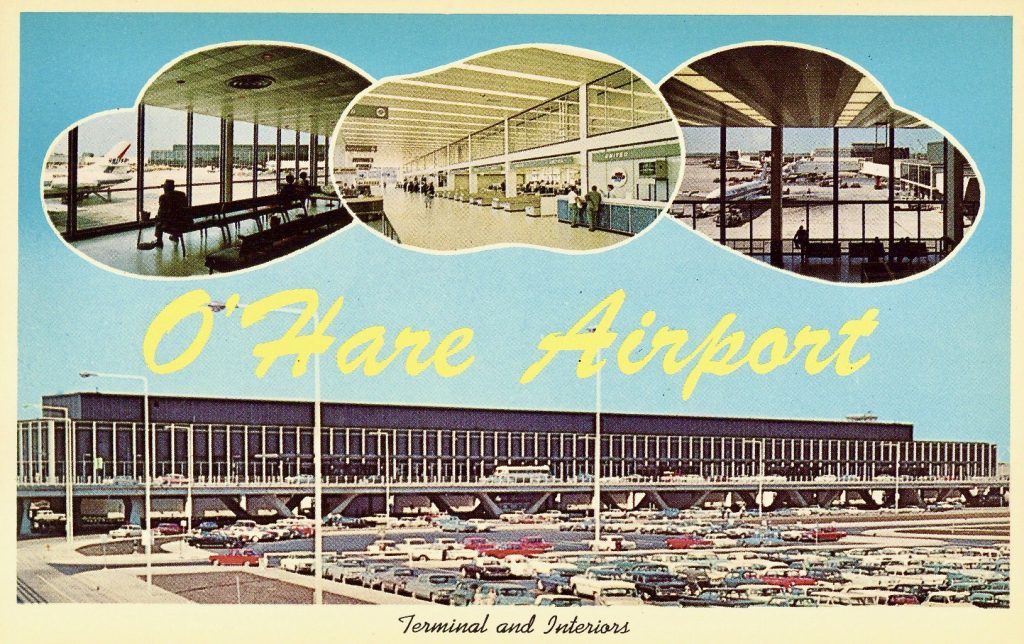
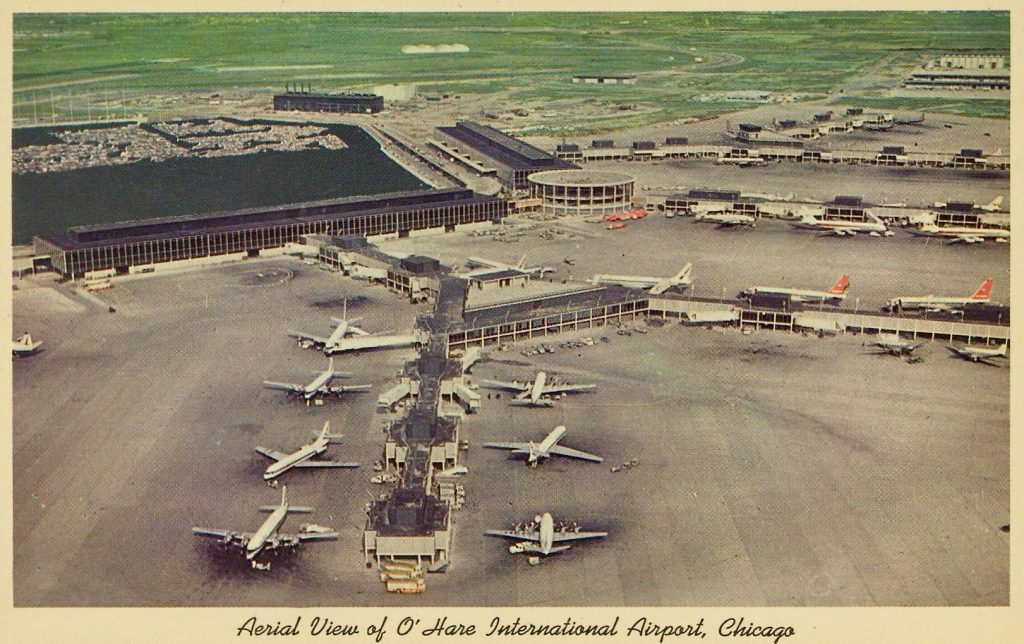
O’Hare (through United Airlines) and San Francisco International (through Pan Am) each claim to have been the first airport to use jetways.
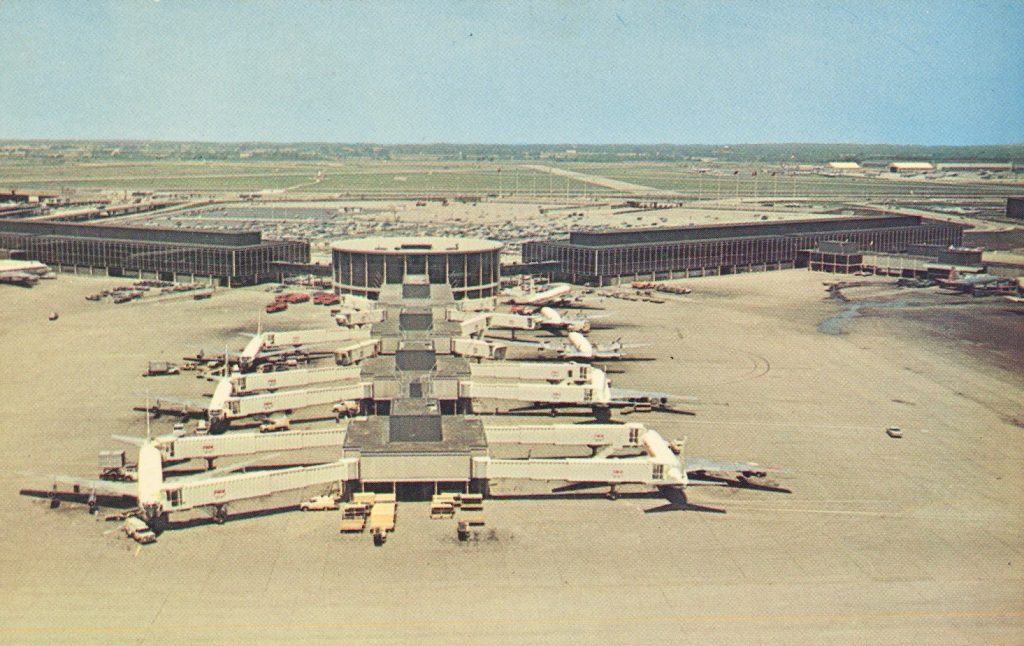
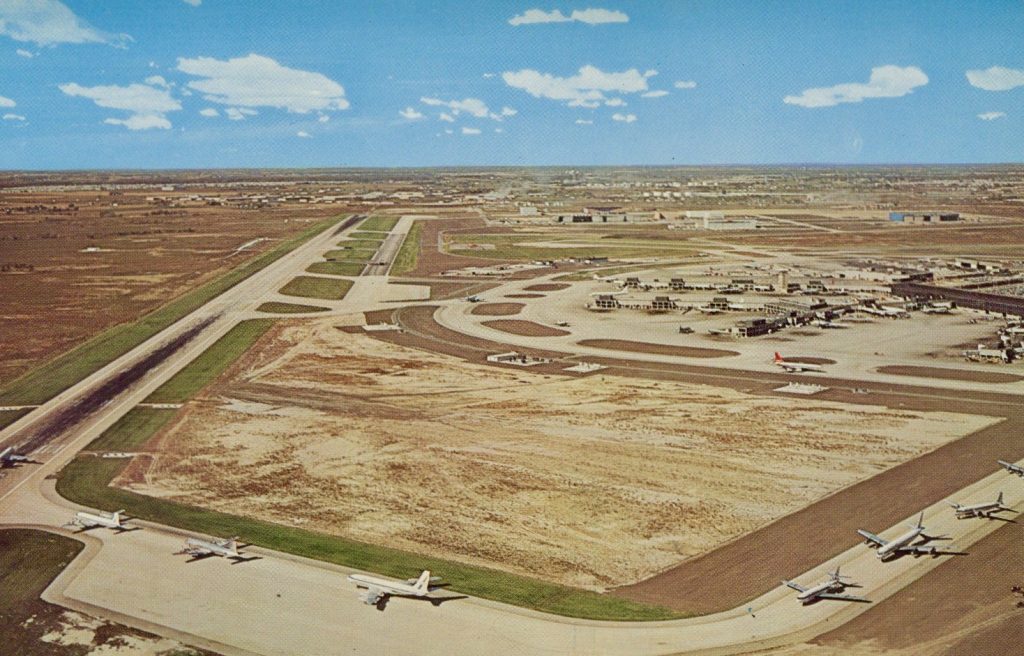
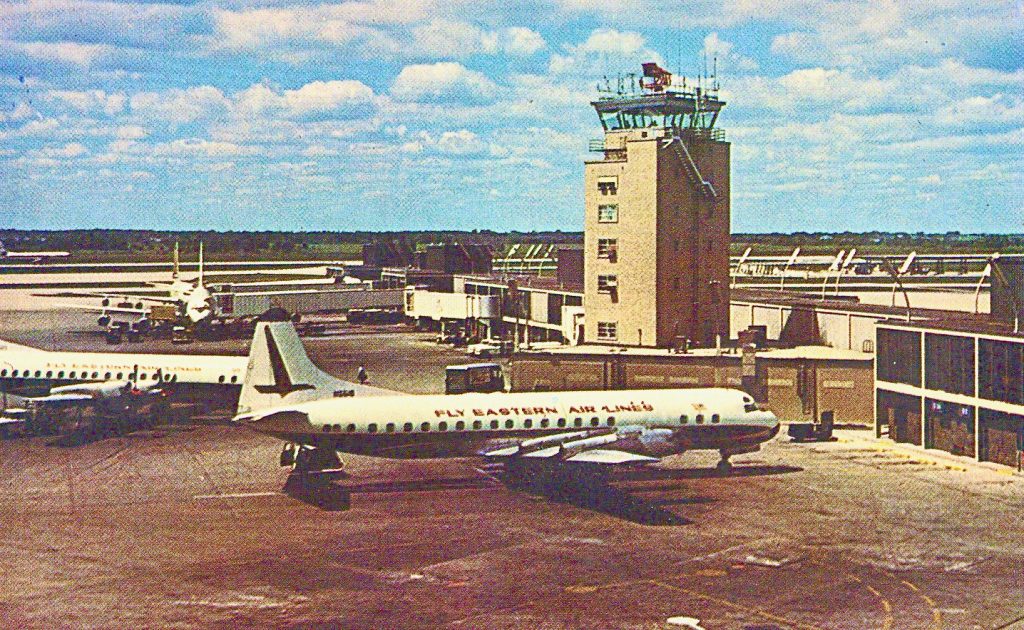
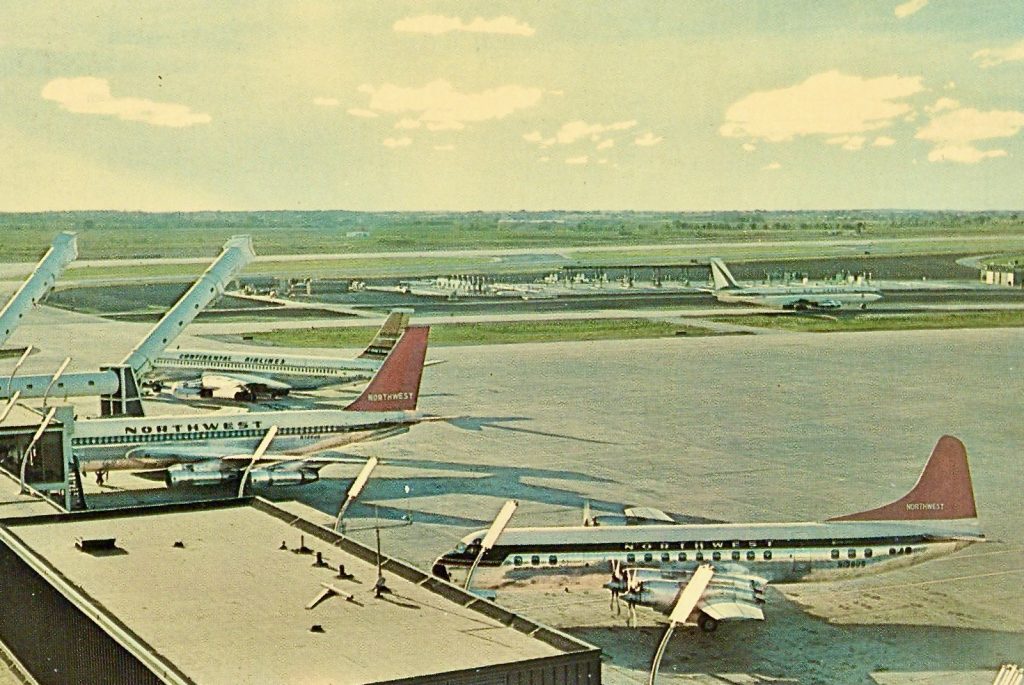
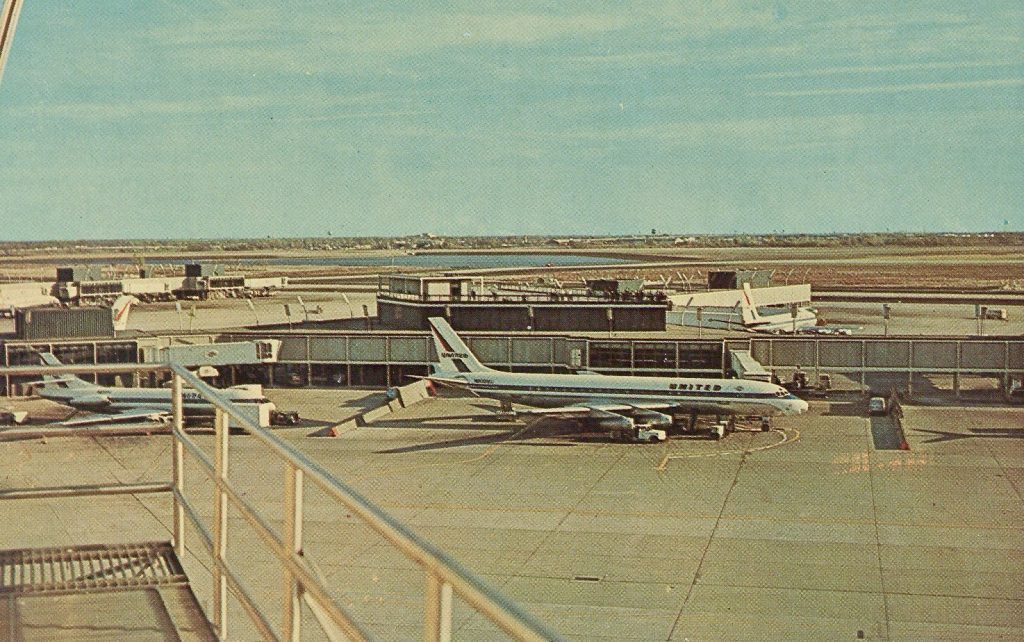
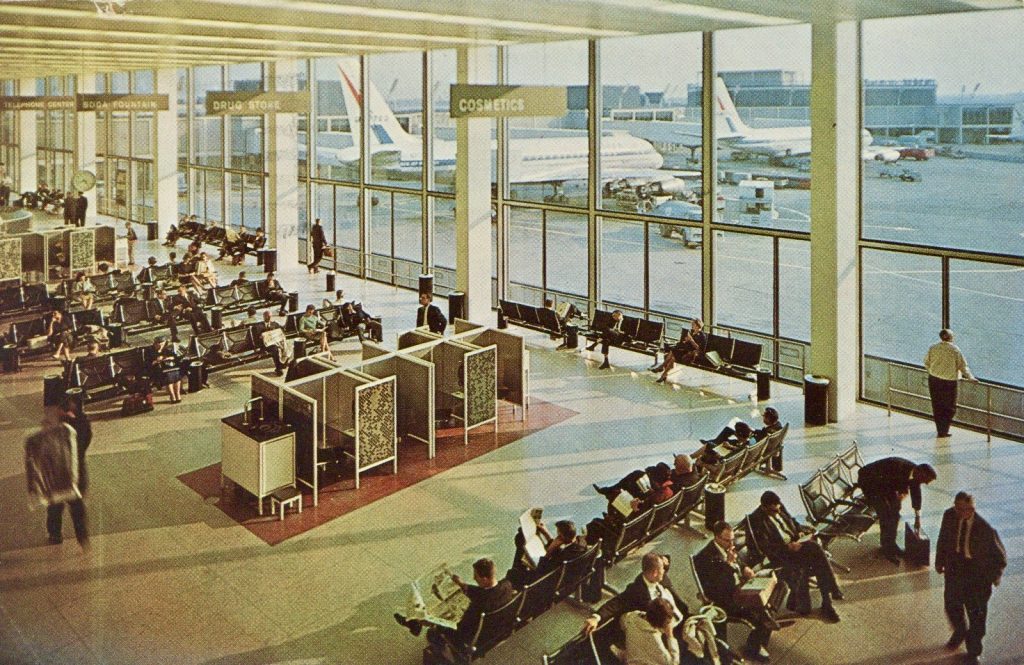
Very few postcards on Chicago O’Hare have been published from the 1970s to date. Here are some examples:
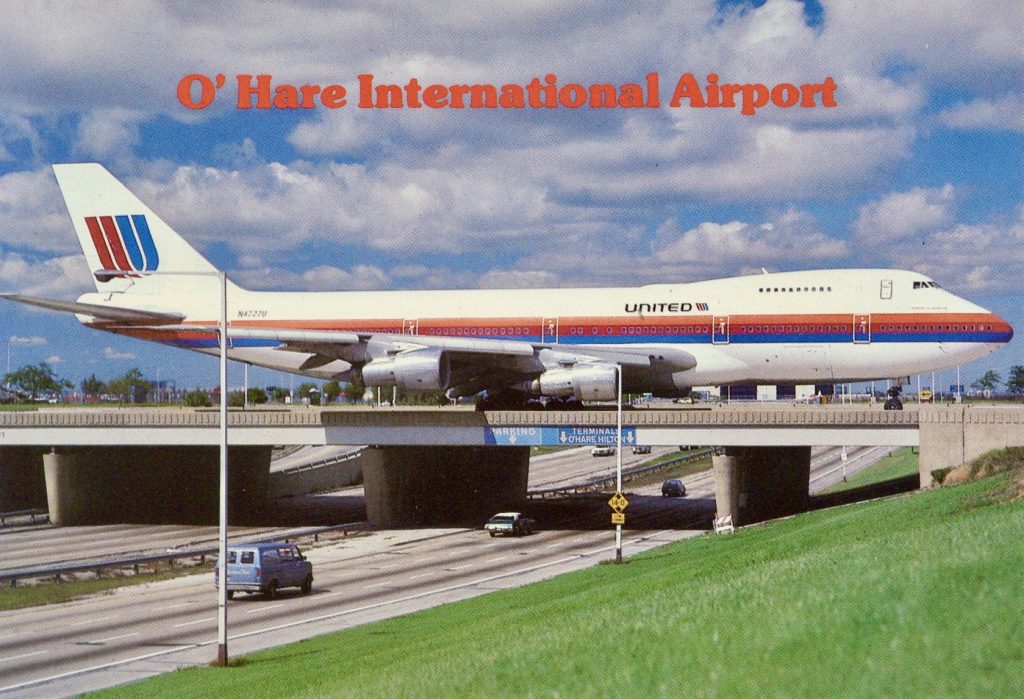
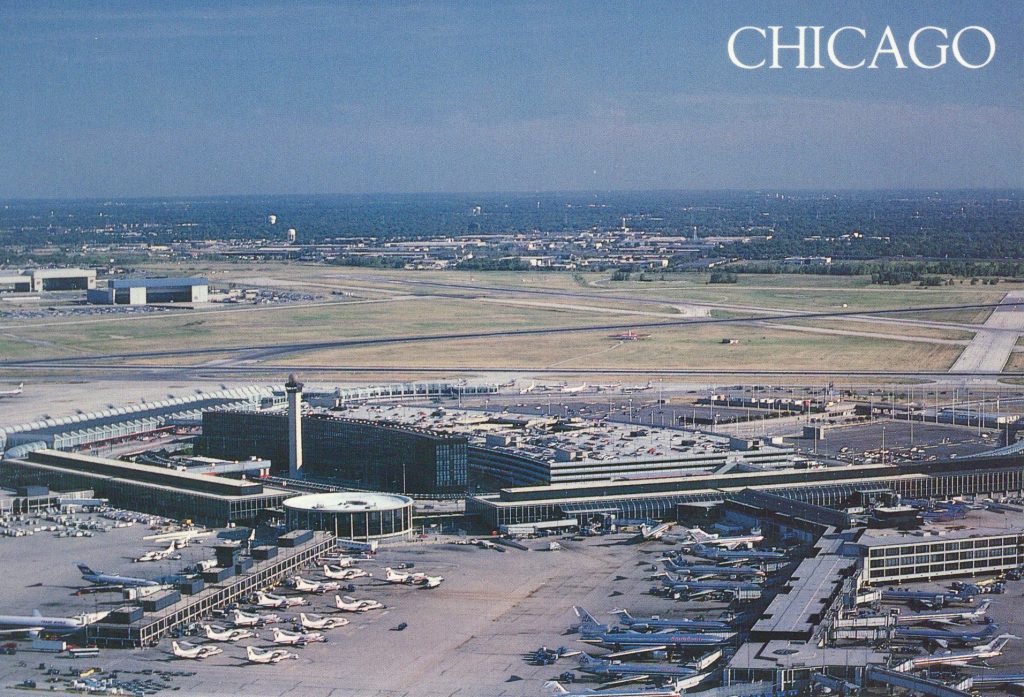
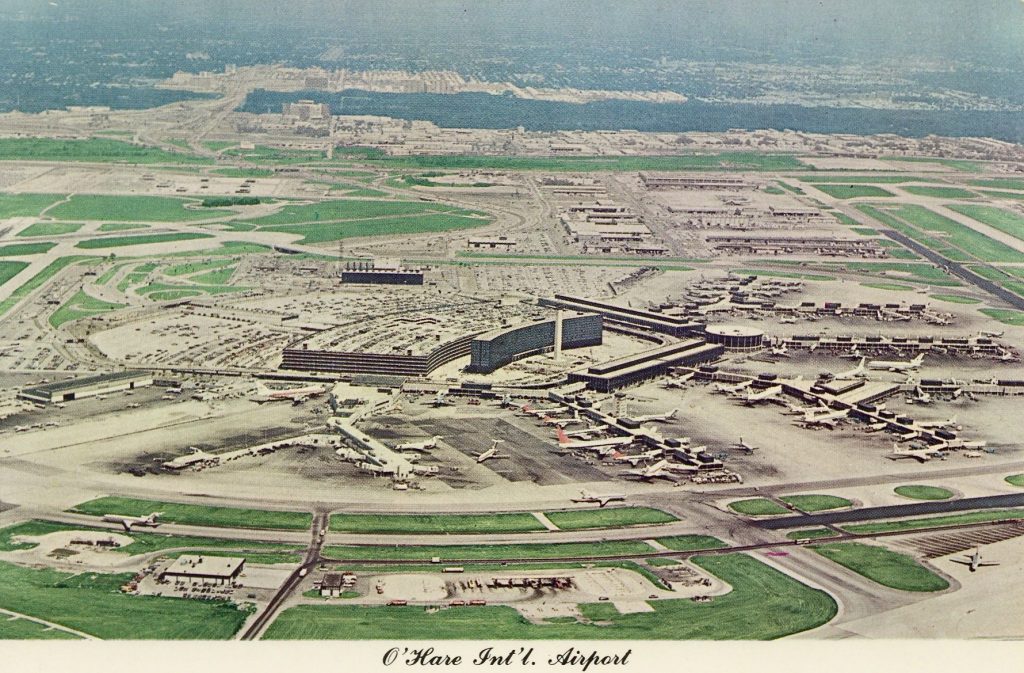
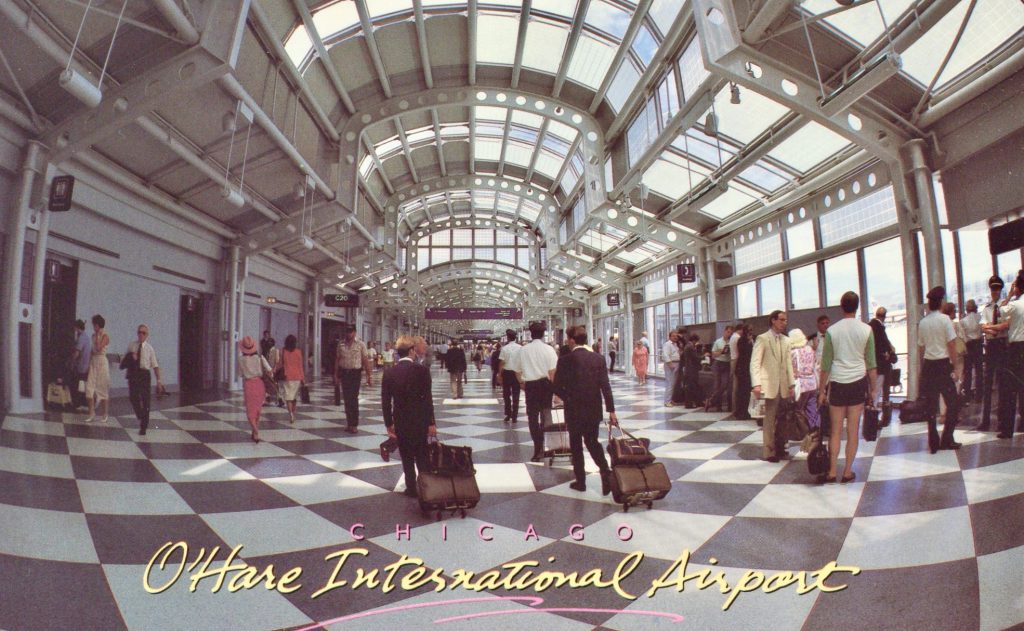
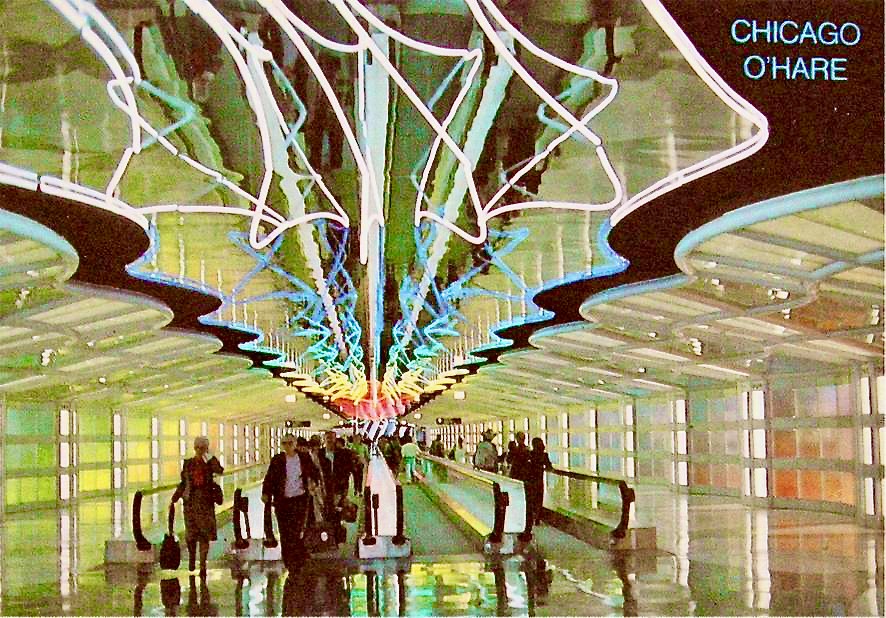
Note: All the postcards shown are in the author’s collection. They are all fairly common.
Since 1990, Chicago O’Hare International Airport has continuously been expanding to meet the demands of growing passenger volume. In 1990 American Airlines, the second-largest carrier at O’Hare next to United, completed a large renovation and expansion of its facilities in Terminal 3; and in 1993 a newer international terminal, Terminal 5, opened.
In 2005 the airport embarked on an “O’Hare Modernization Plan,” a $6 billion airfield reconfiguration designed to transform O’Hare from an air traffic bottleneck into a more modern airport with fewer ‘”system-impact delays.”. Sixteen years later, in September 2021, O’Hare celebrated the completion of this project which included four new runways, the extension of two other runways, two new air traffic control towers (South and North), and the replacement of intersecting runways with parallel runways.
Yet more plans are underway at O’Hare. In 2018, a year when O’Hare handled over 84 million passengers, with about 2,400 daily flights to over 200 scheduled destinations, the airport adopted its latest master plan, called “O’Hare 21.” This plan includes, most significantly, a Terminal Area Plan whose centerpiece is a new O’Hare Global Terminal, to replace Terminal 2 and be a gateway to the airport. The Plan also intends to integrate domestic and international terminal operations, allowing airlines in each of the three major airline alliances (Oneworld, Skyteam, and Star Alliance) to consolidate operations in one terminal. Other features include increasing gate capacity by 25%, improving baggage and security services, and near-term expansion of Terminals 3 and 5.
References
- flychicago.com. Chicago Department of Aviation site, tab “O’Hare History.”
- wikipedia.org. “O’Hare International Airport.”
- chicagotribune.com/news. “O’Hare International Airport timeline: From farm to global terminal,” by Kori Rumore (September 9, 2021).
- Spiselman, Anne, “Chicago O’Hare and Its Next 25 Years,” Airways Magazine, March/April 2019, pp. 78-87.
With all the new developments and activity at Chicago O’Hare International Airport, I hope to see you at Airliners International™ 2022 Chicago, June 23-25, 2022, at the Hilton Rosemount/Chicago O’Hare Hotel. This is the world’s largest airline history and airline collectibles show and convention, with nearly 200 vendor tables for buying, selling, and swapping airline memorabilia (including, of course, airline postcards), seminars, the annual meeting of the World Airline Historical Society, annual banquet, tours and more. You might want to enter the Postcard Contest at the show. More information on AI2022 is available at airlinersinternational.org. Follow this link for Postcard Contest Rules.
Until then, Happy Collecting,
Marvin
Trackback from your site.

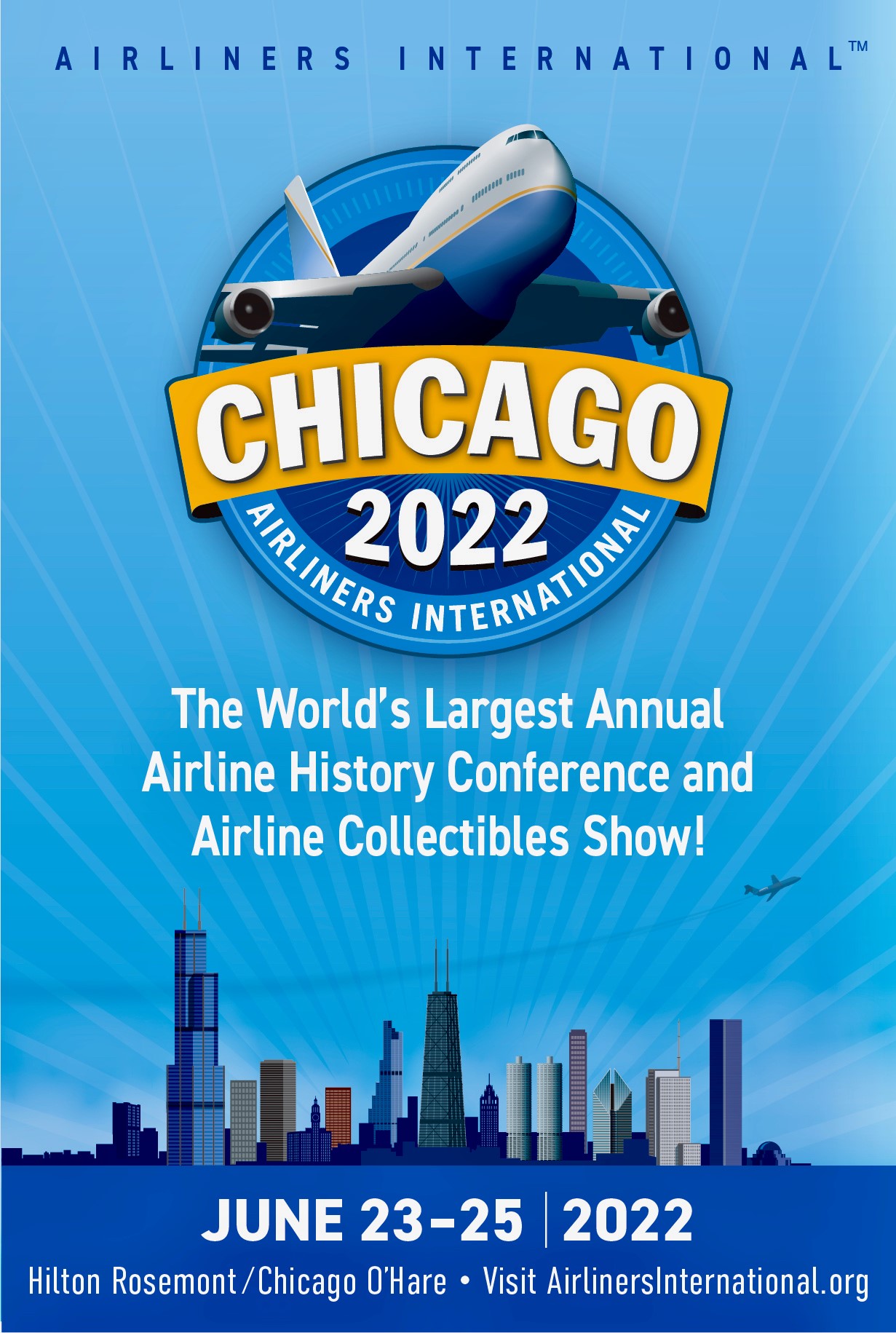
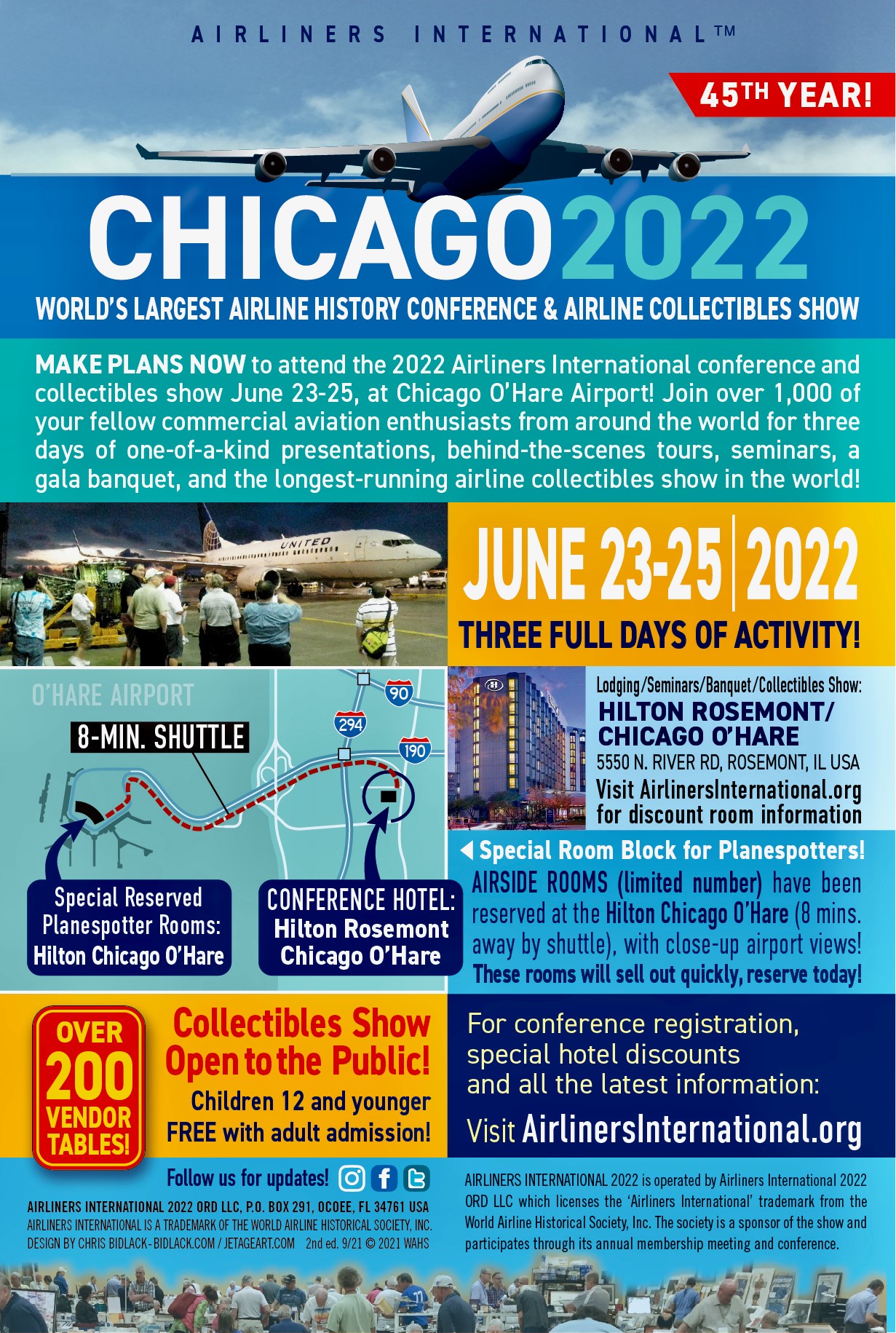

Cynthia A. Cochran
| #
I’m curious about when the name “O’Hare Field” was changed to “O’Hare Airport” (and whether “International” was added simultaneously or later). Clearly it was referred to as “O’Hare Airport” in 1962, as seen in one postcard, but was that the official name? And was that the first year that “Airport” was used?
Reply
Frank Vacchiano
| #
The first time I was at O’Hare was in July 1955. Post cards were great rememberances of how the airport grew to what it is today. I live near Midway when the flights were transferred to O’Hare. It was very sad. I still live there and watched it come back to life. Are copies of the post cards available for purchase? Thanks, Frank Vacchiano.
Reply